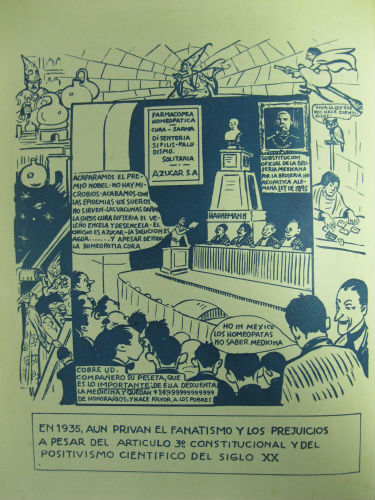April 8, 20120

In 1960, Jornal do Médico – a journal with circulation in Portugal – reported the arrival of the Softenon drug [a brand name for thalidomide], an antihistamine from the German laboratory Chemie Grünenthal, to the Portuguese pharmaceutical market.
The thalidomide disaster is one of the saddest episodes in the field of pharmaceutical history.
Thalidomide was a drug widely used in the late 1950s and early 1960s for the treatment of nausea in pregnant women.
However, in the 1960s became apparent that thalidomide treatment resulted in severe birth defects in thousands of children.
The article Risk-free rest and sleep: Jornal do Médico (Portugal) and the thalidomide disaster, 1960-1962 (HCSM, 2020, vol.27, n.1.) analyzes the way the Porto-based journal Jornal do Médico reported on the episode.
Professor of the Department of History at Universidade Estadual de Ponta Grossa, Brazil concludes that even though the journal was aware of what had happened, they were slow to report the damage caused by thalidomide.
Read about thalidomide in HCSM:
The thalidomide tragedy – A review on the history of thalidomide and its consequences for the victims in Brazil.
Moro, Adriana and Invernizzi, Noela. The thalidomide tragedy: the struggle for victims’ rights and improved pharmaceutical regulation. Hist. cienc. saude-Manguinhos, Set 2017, vol.24, no.3, p.603-622. ISSN 0104-5970
García, Víctor Manuel. Remedios secretos, drogas heroicas y medicinas de patente: una historia de la regulación de los medicamentos en Antioquia, 1900-1940. Hist. cienc. saude-Manguinhos, Dic 2007, vol.14, no.4, p.1437-1437. ISSN 0104-5970
See also our selection of articles with content analysis of journals and newspapers!
Theories about the propagation of yellow fever – Soraya Lódola and Edivaldo Góis Junior did a documentary research about the scientific debate on yellow fever in the Brazilian press between 1895 and 1903.
Mortalidad infantil en Santiago: representaciones y discursos, Chile, 1860-1914 – It explores the characteristics of infant mortality in Santiago during a historical period in which the demographic indicators reached very high figures turning the phenomenon into a medical and political issue.
Los estudios farmacéuticos a través de la Gaceta Médica de México – El artículo analiza 12 escritos en farmacia publicados en el periódico de la Sociedad Médica de México, entre 1864 y 1867.
Una enfermedad lejana la información sobre poliomielitis y síndrome post-polio en la prensa hispanolusa, 1995-2009 – Se explora el cambio en la percepción social de la polio en la Península Ibérica a través del análisis de contenidos, entre 1995 y 2009, de dos periódicos de gran tirada
The idealized representation of women in Brazilian magazines, 1940-1960 – It analyses the female figures of the advertisements published in O Cruzeiro and Manchete magazines between the 1940s and 1960s.
Medicalization of pregnancy and childbirth in the pages of Claudia, 1961-1990 – This paper argues that pregnancy and childbirth were resignified, including the need for women to internalize the desire and obligation to be healthy during pregnancy and produce healthy children.
La protección a la maternidad de las trabajadoras en Argentina – Carolina Biernat y Karina Ramaciotti analizan la construcción de las políticas sociales destinadas a las madres trabajadoras durante el primer peronismo.
La epidemia de cólera (1886-1887) en Mendoza, Argentina – Este artículo analiza los discursos de los actores políticos realizados durante y después de las pestes.
Las epidemias de cólera en Córdoba a través del periodismo: la oferta de productos preservativos y curativos durante la epidemia de 1867-1868 – El artículo analiza el ofrecimiento de productos, que se publicaba en la prensa escrita en la primer epidemia del año 1867/68.






